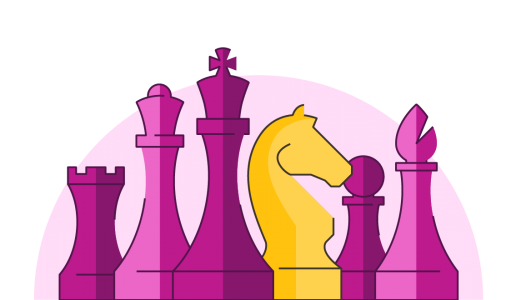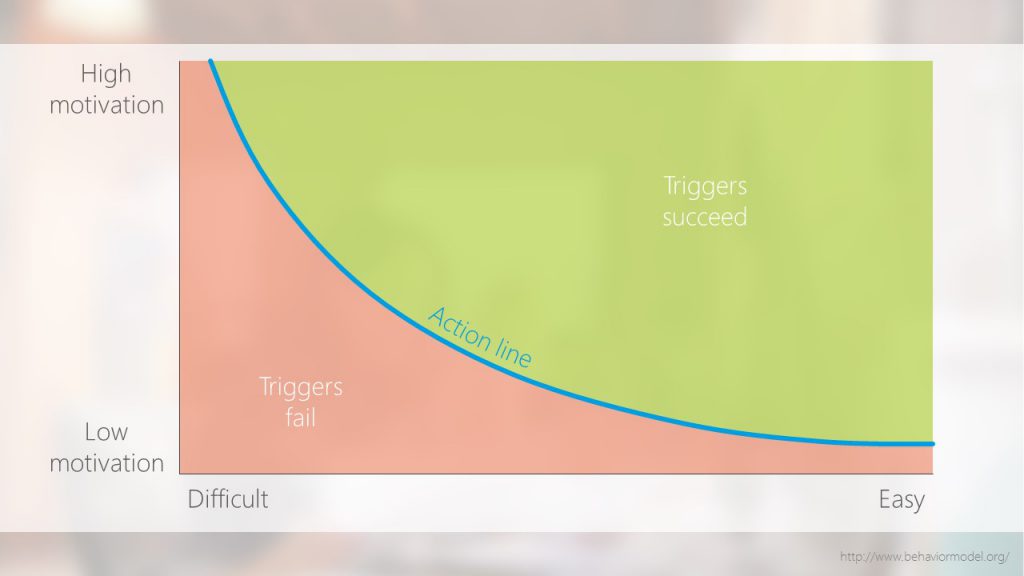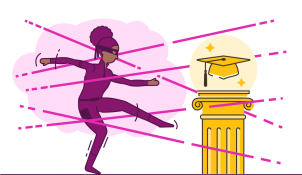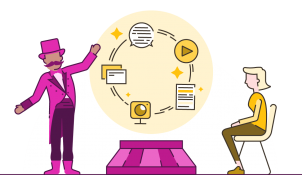Calling all eLearning aficionados! We’re back with a brand-spanking new blog post all about eLearning assessments. When we work with subject matter experts to develop multiple-choice questions we see the same mistakes again and again that make a big impact on the validity and reliability of assessments. But don’t despair, we’re going to show you how to fix them!
The power of gamification to engage people
- Written by: Richard Goring
- Categories: Effective eLearning

Our society is plagued by a deadly condition – boredom. It’s terrifying – and forces us to be constantly stimulated so that we can do anything for more than a few minutes at a time. One aspect, that is coming for more of us, attempts to stave off the effects of boredom by blending the worlds of leisure and work, in which our entire lives may become a game. The idea is that there are things that we have to do, things we want to do, and things we’re addicted to doing. And that in this new world, even the most tedious tasks will be transformed from things we have to do through that scale and into things we’re addicted to doing. And, it’s happening already. It’s called gamification.
So, kick back, relax, and get the low-down on this phenomenon from the video below.
A summary of the content from the video can be found in the article below.
Introducing gamification
The idea of gamification is to use game attributes to drive player-like behaviour, which involves creating rules, providing rewards, and encouraging competition with others, all in non-game settings.
That means that if you collect points when you make a purchase, or follow a progress bar when you complete a web profile or survey, or win with a bid on eBay – you’ve already been lured into the fairground ride of gamification.
Endowed progress effect
A really odd phenomenon in gamification is that artificial advancement actually seems to increase the effort that people put in to participate, as a task that isn’t finished will loiter in your mind more than ones you haven’t started.
This is called the Endowed Progress Effect, which is often found on those loyalty cards where you collect stamps each time you buy something. It’s usually the case that new cards already have a stamped or two on them, but don’t be fooled! It’s not the store being kind or generous, it’s a cunning psychological mind trick! By putting some free points or stamps on it, they’ve make the whole process a task that you’ve started, but haven’t completed, rather than a task so tedious that you can’t even be bothered to begin.
What you tend to find in most games and loyalty schemes is that the early stages are extremely easy, which helps to get you started and established, because the designers know that you’ll then find it harder to stop. And by giving the whole thing rules, it becomes a structured activity that you can easily follow and engage with.
Games in history
Games have been used by people to pass the time for centuries. The oldest board game so far discovered has been found in Egyptian burials that date from around 3500BC. It was called Senet, and the game boards were often in the graves, along with the other objects that the ancient Egyptians found useful for passing the time on the long journey through the afterlife.
A story from the early days of game development was told by Herodotus, who described how in the ancient kingdom of Lydia, now part of Turkey, there was a terrible famine. The Lydians invented various games that used dice, knucklebones, and balls, to distract them from their hunger. They would eat one day, then play games all the next day, to stop themselves thinking about food. According to Herodotus, this continued for 18 years. Pretty powerful stuff.
Games today
Today, this is nothing. We’re used to being able to play amazingly sophisticated games on every day devices like our phones and tablets. It’s really extraordinary that we can take it for granted, when you consider that the first electronic game was invented only seventy years ago, in 1947. It was called the cathode ray tube amusement device and was based on radar displays from the second world war. You had to adjust knobs that angled light beams to hit targets that were stuck to the screen on a clear overlay. Perhaps not the most riveting fun, but look at where it’s got us now.
Games in businesses
Game playing has the attribute of keeping you focused, and as a result is being enthusiastically adopted by companies that are looking to motivate both staff and customers alike and make everyone really productive.
For most of human history, work has been a necessary evil. It paid the bills and got you out the house. But that’s not enough any more. For many, work also has to be enjoyable as well.
The culture change really got going during the 90s in the dotcom bubble, when lots of new tech companies came along and decided to completely change the etiquette of the workplace and how things should be. These Segway riding, hoodie-wearing, hipster CEOs really blazed the trail for the gamification phenomenon that now affects so many of us.
Gamification doesn’t always work
Gamification doesn’t always work well. It’s a buzz phrase and so often misunderstood, and mis-used.
Dr Michael Wu, the Chief Scientist at Lithium, says that many games work over the short term, but it’s hard to make them work over a longer period of time. A silly game might engage people for a few minutes, but it’s unlikely to encourage long term engagement, or behaviour change.
Encouraging participation
The way that gamification actively encourages people to play is the key to producing desirable behavior in people.
Fogg’s behaviour model is something that provides a good framework. It states that behind almost every behaviour there are three elements: motivation, ability, and trigger, that must all converge at the same time for action or behaviour to occur.

Specifically, they are typically arranged on a graph over which you can plot level of motivation, whether the task is easy or difficult, and whether a particular trigger stimulates people into action, resulting in an action line, where anything below the line fails to trigger someone to do something, while things above the line mean they spring into action and are ready to take on the world. See http://www.behaviormodel.org/ for the original details.
There are a couple of viewpoints on which component to focus on most, but it really depends on who you’re dealing with and what the subject matter is. So have a think about which camp your audience is most likely to fall into and consider how to build up their motivation, cater to their ability, or provide the right trigger to get them going.
What effective gamification needs
There are several things that you really need to consider to make gamification work well – have a look at some teach principles here. You need to think very carefully about the behaviour that you are trying to encourage, and be specific. Coming up with generic ideas, like sales performance is unhelpful, as it contains lots of specific behaviours that combine to achieve the desired result. You need to come up with scenarios and games for each of these individual elements to achieve the overall behaviour that you need.
It’s also important to consider the player, and understand them in detail. Consider whether they have the motivation, ability, and triggers needed to engage with your game, and whether they have all three at the same time. If not, what can you do to help them.
Tracking behaviour, and changes in behaviour is another key element, as it allows you to understand behaviour and give meaningful feedback to your players – ideally immediately – so that they can build on it.
Sweden gets it right
In Sweden, the authorities tested a new kind of speed camera that took photos of speeding drivers and fined them, but it also photos of non-speeding drivers and entered them into a lottery to win the fines that had been collected. When the system was trialed, the average speed dropped by about 20%.
Real-time feedback provides stimulus
In a traditional job, you might get feedback in an annual review. But if your work is gamified, you’ll probably be able to see how you’re doing compared with your targets and everyone else on a pretty much real time basis, so it can further encourage and motivate you to be better and beat others.
Games & status
And even if you don’t yet have a gamified job, you experience similar things with social media sites like Facebook and Twitter, where everyone is clamouring for attention and to get the most likes, shares, followers, and retweets, and as a result, you’re always being ranked.
Potential power of gaming effort
To make games work well, you need to ensure that they are creative, imaginative, and collaborative. Yes, set a goal for people to get to, but give them choices and options on how they get there and complete it. Being involved in it more will encourage even greater participation and make it more effective.
So consider carefully the behaviours that you want to change, how your players will respond, and what you need to track to ensure things are successful. Encourage creativity, imagination, and collaboration in your games and that allow players to contribute as well. Have fun, and enjoy!
Leave a commentRelated articles
Employee training: Challenges for large organisations
Creating employee training for a large organisation can feel like playing whack-a-mole at the fair. Just when you’ve solved one need for one group, another springs up. Just when you’ve placated one stakeholder another appears out of the blue. You’re sweaty and stressed and it feels like the game will never end! Get it right and you’re rewarded with a big bag of candyfloss and the warm glow of knowing you’ve changed behaviour for the better. But getting there without help can be a real challenge.
How to run Virtual Instructor-Led Training
- Effective eLearning
- Comments: 1
Creating a great virtual training experience is about how well you use the physical and virtual tools at your disposal. Good virtual classroom learning requires clever design to focus your learners’ attention, create interactivity, and encourage discussion.
Join the BrightCarbon mailing list for monthly invites and resources
Tell me more!No one was looking at their electronics; all eyes were on the podium. We raised the bar on what a great presentation is supposed to look like.
Curtis Waycaster Smith & Nephew




